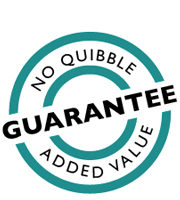Cost of capital explained

When investors entrust their money to a company, they expect to receive a return by way of compensation. For lenders, compensation is in the form of interest and for shareholders, compensation is in the form of dividends and share price appreciation. The minimum rate of return required by investors is called the ‘opportunity cost of capital’ and represents the rate of return foregone by not investing in an alternative investment with the same level of risk. The weighted average cost of capital (WACC) for a company is the opportunity cost of capital for each type of investor (i.e. lenders and shareholders) weighted by the amount of funds provided by each investor type. The WACC represents the minimum return on investment required to create value.
When investors choose to invest in government bonds of major economies, they are almost certain to receive exactly the level of return expected, and such investments are deemed to be effectively ‘risk free’. For example, the rate of return on UK government 10-year bonds as of August 2014 is circa 2.5% and is effectively a guaranteed ‘risk free’ return.
When company borrows from a bank, the company will be required to pay a premium over and above the risk-free rate to compensate for the risk of default on the loan, and the greater the perceived risk of default, the higher the interest rate the bank will require. The rate of interest charged on borrowings is called the ‘opportunity cost of debt’. Because interest is an expense that can be offset against a company’s taxation liability, the real cost of debt finance to a company is the net of tax cost (i.e. the gross rate of interest minus the rate of corporation tax, currently 21% as from April 2014 – thus 10.0% gross minus 21% tax equals 7.9% net).
When investors choose to invest in company shares, they will normally require a higher return than lenders. This is because, lenders have first call on a company’s free cash flow, whilst shareholders have no guarantee of dividend payments and indeed, should the share price fall, a shareholder’s return could potentially be negative. Shareholders will thus require a higher return than lenders to compensate for the greater risk they bear. The minimum return required by shareholders’ is called the ‘opportunity cost of equity’ and varies with the perceived risk of holding a particular share – the higher the perceived risk, the higher the minimum return that will be required. For example, a venture capitalist investing in a ‘high risk’ biotechnology start-up will expect a significantly higher return than a pension fund investing in a mature ‘low risk’ non-cyclical utility.
Historically, the return from a diversified, balanced portfolio of shares has fluctuated between 5-8% over and above the 10 year government risk free bond rate. This additional return over and above the risk free rate is called the ‘market risk premium’. As of August 2014, the opportunity cost of equity for an average risk FTSE company was thus in the order of 7.5-10.5% (i.e. circa 2.5% ‘risk free’ plus 5-8% ‘market risk premium’).
The weighted average opportunity cost of capital (WACC) for a company depends on four factors:
- its opportunity cost of debt finance – assume 8% net of tax
- its opportunity cost of equity finance – assume 12% (i.e. an above average risk company)
- the debt share of total finance – assume 25%
- the equity share of total finance – assume 75%
In this instance, the company’s WACC is 11.0% and is calculated as follows:
(8% x 25%) + (12% x 75%) = 11.0%
To discuss your business critical issue
Please call Paul New on 020 8390 9972 or 07790 501225 or send a message.







